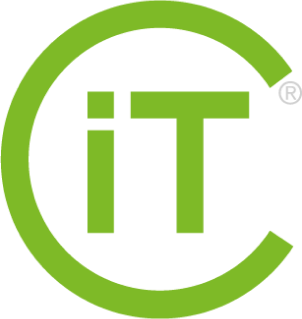LOTO | Different Types of Locks for Different Purposes


Waste material management: Prioritization of actions for a better management system
14 July 2017
The generation of waste material is an integral feature of the human mode of life and of organizational activities. Commonly considered as refuse and trash, waste materials are often considered as materials that no longer have any value. Yet, already since the last few decades, the concept of waste-resource is tending to change the ways in which waste materials management is conceptualized. The idea that waste materials are resources whose value can be enhanced comes from the concept according to which matter produced in nature in the form of closed loops is constantly recycled. However, numerous challenges still exist in the way of a healthy management of these materials.
The management of waste materials is not a minor affair. Apart from generation of waste, the problem often occurs in the superficial management of such materials where there is little or no consideration of their environmental consequences. Viewed from a sustainable development perspective, the possibility of material recovery should not be under estimated, let alone dismissed by organizations. Often companies that are generators of substantially higher volumes have an important role to play with regard to the management of refuse produced by their operations. They need to undertake well-thought out processes that effectively prioritize their actions. The integration of the 3R-RD principles within a waste management system is an efficient tool for all organizations.
The 3R-RD hierarchy is an approach according to which certain actions need to be prioritized with the aim of prolonging the service life of resources. Reduction at source, reuse, recycling, Reclaim and Disposal represent the order of priority according to which reduction should always be the first action while disposal is the last recourse. In the absence of a life cycle analysis in which an objective evaluation of the environmental consequences of the different options adopted by the waste materials management system is done, the 3R-RD approach proves to be the most environment friendly management system.
The principles of the 3R-RD are known the world over, but their application and their complete integration within waste management systems of organizations is not a simple task. The establishment of a structured system and a thoroughly thought out process is the key to ensuring effective management within organizations.
At the very outset, in all organizations, the management authority should support the setting up of this new system or the improvement of the previously existing system. The drafting of an environmental policy, especially on the management of waste material, helps to formalize the commitment of the authority. Financial support, the creation of a committee and the appointment of a responsible person are essential elements towards its setting up.
Before any planning, it is necessary to get an overview of the situation. For this purpose, it is essential to get a thorough diagnosis of the waste matter generated and its present management. This stage helps to identify the issues and determine the priorities that are indispensable for drawing up a plan of action. A complete identification of the waste matter is sometimes necessary to check the composition and the quantities generated.
Once the profile is established, the next step begins, that is, the stage of thorough reflection according to the 3R-RD principles. Ideally, undertaking a series of life cycle analyses of different materials and different possible modes of management would be the course of action. However, this manner of functioning is not accessible to all organizations due to lack of resources and it can also prove to be complex and not completely reliable. The principles of 3R-RD are thus a reference for waste material management. The process of reflection allows the organization to question its way of functioning and analyzing, and on the one hand, helps it to determine its requirements of raw materials and on the other, take account of waste materials generated.
In order to ensure the implementation of concrete actions for better waste material management and reduction, it is imperative to elaborate a detailed plan of action. Objectives should be laid out wherein are elaborated one or more actions as well as a series of information such as indicators, targets and necessary resources. The results expected should be precise and the time frame, realistic. . The creation of a communication plan is also helpful in the implementation of new waste management initiatives.
A management system should be adapted to the type of organization, to the types of materials generated etc., rather than to the installations. Nothing should be left to chance and no material should be disposed of under the pretext of an incomplete thought process.
A waste management system that integrates the 3R-RD without compromising on the process of reflection associated with it, has several advantages:
A computerized waste management system is an important tool for organizations that wish to improve their environmental performance and to make the most of the principles of the 3R-RD. Since all the steps previously mentioned can be included in the computerized system, the efficiency will be considerable. This type of system not only allows the elaboration of a policy, a diagnosis, a profiling and a course of action, but it also helps to rigorously monitor the implementation of the commitments made by the authorities and the implementation of the actions and the achievement of objectives laid out in the plan.
An Environment, Health, and Safety (EHS) software, such as CONFORMiT offers the possibility of analyzing risks and conducting inspections related to waste material management. It also allows one to create processes specific to the management system and clearly indicates any incident or accident associated with it. The possibility of connecting equipment and human resources to the management system helps the process, especially if notifications are sent to the responsible persons who will ensure timely accomplishment of tasks. Moreover, the control panels created in this software with the data entered helps to visualize the management of materials in the organization and take clearer decisions. The points mentioned here are only a few examples of what can be done with the help of a computerized waste management system. In this way, such computerized tools can greatly facilitate the functioning of organizations with regard to time, efficiency, reduction of risks and especially environmental performance.
In conclusion, waste materials have the potential of entering into a second chain of activities and bringing numerous environmental and economic benefits, even to the organization. The idea is simple: ultimately, it is necessary to give importance to the best practices that help to reduce the quantity of waste sent for disposal. Compliance with the 3R-RD hierarchy allows one to maximize the efficiency of a waste management system. By seriously applying the 3R-RD approach many organizations optimize their performance by adopting innovative approaches such as eco-design, eco-technology, eco-efficiency and dematerialization to improve their environmental record and their efficiency.